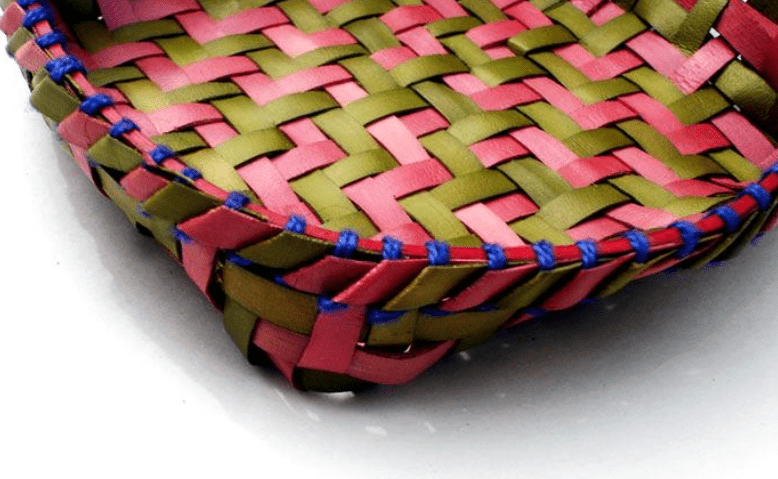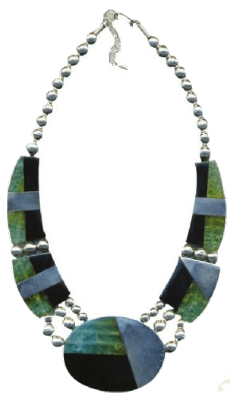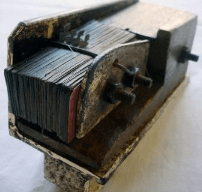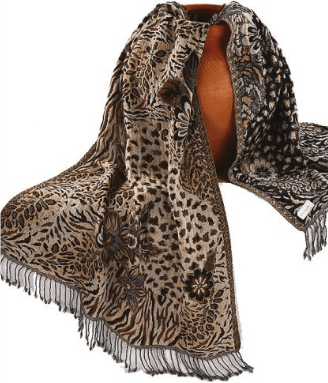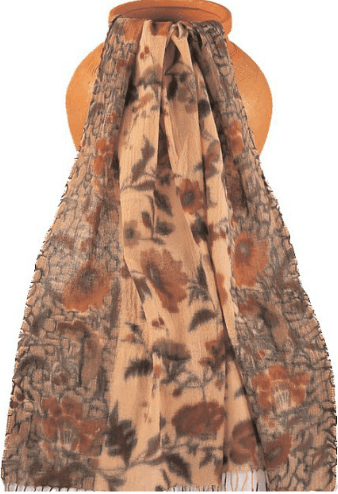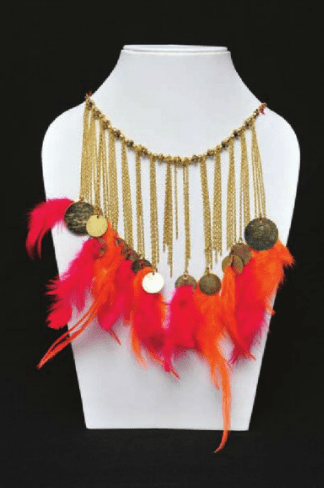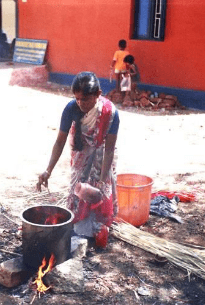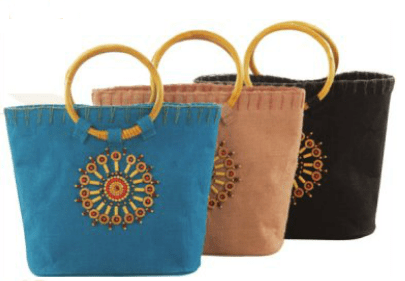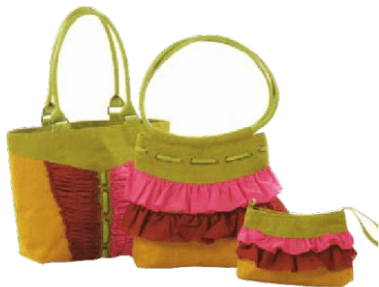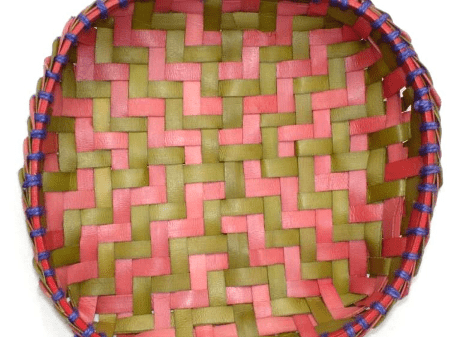The Kottans are traditional palmyra leaf baskets of Chettinad, originally used for packaging and as a container for giving gifts and offerings at family functions and rituals. Colourful kottans containing betel nut leaves and areca nuts were given to friends and people in general as a form of invitation or agreement.
List of Palm Leaf Craft
- Region of Production
- Producer Communities
- Pricing
- Availability
- Tools Used
- Process
- Weave Patterns
- Malayalum weave pattern
- Cut Kottan weave pattern
- Products and their uses
- Primary market
- Technology
- Design
- Market
The craft was initially a leisure activity of the women of the area but now is practiced as a secondary source of income. Also in those days, kottans were decorated with beads and crochet. However, this art is almost extinct. The M. Rm. Rm. Cultural Foundation has been responsible for the revival of the kottan. The M. Rm. Rm. Cultural Foundation is a non-profit organization based in Chennai, Tamil Nadu and working towards the research, documentation and revival of languishing crafts, textiles and architecture. The Foundation aims at empowering local craft communities.
Region of Production
This craft is practiced in the Chettinad area of Tamil Nadu. Chettinad is a region in the Sivaganga district of southern Tamil Nadu, India. Chettinad is comprised of its capital Karaikudi and 74 other villages. Presently kottans are made in the village of Keeliarpatty (training centre), and in neighboring village households.
Producer Communities
Chettinad is the homeland of the Nattukottai Chettiars (Nagarathar), a prosperous banking and business community. Nowadays, the locals mainly sustain themselves on agriculture and labour, and the womenfolk make the kottan. The art had almost died before it was revived by the M. Rm. Rm. Cultural Foundation. Now, even the women of the surrounding areas are being trained to make kottans.
Raw materials
Specification
•Kurutthu (harvested palm leaf)
•Dyes (chemical and natural)
•Thread
Pricing
A good-quality kurutthu costs on average depending on the season and government regulations on toddy tapping. (If the climbers are harvesting toddy from the trees anyway, they are willing to work for less). The transportation charges raise the price of one leaf, since cargo carriers charge according to the space occupied, not weight (which is negligible).
The prices of dyes vary according to brand and quality. Natural dyes are expensive whereas chemical ones relatively cheaper.
Availability
The palm leaf is available locally but sometimes needs to be sourced from outside the region. Availability is subject to seasonal fluctuations. The leaves can be harvested all through the year except during the rains (July-Aug and Nov-Dec). But since the leaves need to be tender, it may happen that leaves from some trees cannot be used. Also a worker is required to climb the tree. So the Foundation has assigned a few people to harvest the leaves one time during the year and transport them to their storehouse in Kanadukathan, as the palm leaf can be stored for a longtime without getting spoil. The chemical dyes are generally obtained from Madurai.
Tools Used
•Satyagaam-Cutting tool
•Palm leaf slicing machine
•Wrench
•Cutter
•Needle and thread
•Scale and measuring tape
•Instruments used for dyeing: vessel
•Lota-mug (to hold water)
Satyagaam: This is the primary tool used for cutting and sizing of the palm leaf strips it is made of iron. The length varies from 12 cms to 20 cms, and the thickness of the blade is ~1mm. The top/upper portion with the sharp edge is used to strip and cut, while the lower end with a slightly curved; thinning point is used for pulling up strips while inserting another palm leaf strip below.
Palm Leaf Slicing Machine:
This tool is applied for slicing the palm leaf into the desired thickness. It is made up of plywood, wooden block, iron, broken blade, screws and nuts and bolts. Rough dimensions are 16 x 9 x 7 cms. The M. Rm. Rm. Cultural Foundation has recently developed it from an earlier crude form.
Wrench:
The wrench or spanner is used to adjust the distance between the blades.
Cutter:
It is used to do the refining work at the end, e.g. cutting off stray strips and excess material.
Needle and thread:
After the kottan has been woven, it is finished a border consisting of ikkee (palm leaf rib), bound with the help of needle and thread.
Process
Harvesting leaves:
The first step is obtaining tender leaves of length ~30-50 inches. The palm leaves are sourced from places with good quality leaves and reasonable cost. Sourcing of leaves depends on nature, government laws and other factors. The Foundation has assigned a few people to harvest the leaves one time during the year and transport it to their storehouse in Kanadukathan as the palm leaf can be stored up to a long time without getting spoil.
Sun drying of leaves: Each side of the leaf is sun dried for 2-3 hours.
Slicing into uniform width strips:
After sun drying, the amount of leaves used to make a kottan is cut into uniform sized strips.
Dyeing: First the strips are taken and dipped in water to make them moist and supple. Then in another vessel water is boiled for 10 minutes. The chemical or natural dye is added and it is kept so for another 10-15 minutes. Now the moist palm strips are put into this vessel for 5-6 minutes, being periodically swirled with a stick. Next, the coloured strips are taken out and dipped in cool water for ~5 minutes, to help set the colour. The duration of boiling varies for chemical and natural dyes.
Drying: After dying, the strips are hung out to dry in the shade. Work on them starts only the next day
Weaving: The first thing to decide is which pattern to weave. There are several weaving patterns; such as Gundamani pattern, Malayalum pattern, Cut kottan, etc. Improvisations upon these such as Sohi Pottana Kottan design are seen. Here another layer of palm leaf strips is added over the finished basket. Variations in Sohi Pottana Kottan are Arai (half) Sohi and Patani Sohi designs.
In any design, the first step is to count the number of strips required for the base.The strips are then moistened, and the working surface (floor) wet, to ease the weaving process. After this the base is made, around which the sides are built.
Border or framework (ending the weave pattern):
The ikkee (palm leaf spine) is used as the border, i.e. closing, of the basket because of its hard and stiff nature. Ikkee of varying thickness can be used according to requirement. For example, for a sari box a thick spine is used, whereas for a purse a thinner one is used. The ikkee is woven in with the strips as well as thread in order to make it more durable. The excess strips at the end are cut off with the help of the cutter.
Decoration: After the weave is completed, thinner strips are inserted into the main weave in order to enhance its look and appeal. This is done with the help of the satyagaam. Various patterns are possible, along with different permutations and combinations of the plain and cross weave of the Gundamani and Malayalum patterns.
Value Addition: After finishing the weave, a wooden base can be added to the basket to make it more stable. This is an improvisation on the traditional process. Similarly, cloth may be stitched at the opening of a purse. These value additions are not done by the craftswomen. They are made possible by the M. Rm. Rm. Cultural Foundation.
Weave Patterns
Gundamani weave pattern
First the strips are moistened. They are then arranged on the wet floor or working surface. The surface has been wet in order to hold the strips together, hence easing the weaving process. For the Gundamani pattern, alternate strips are picked up. A horizontal strip is inserted. This prevents the vertical ones from getting displaced, locking them in place. Once locked, the process is repeated: alternate vertical strips are lifted and a horizontal strip inserted to lock them.
This process continues until the required dimensions of the base are attained. After the base has been woven, either a purse or a basket can be made. The length of the strips needed to complete the basket or the purse must be considered before starting. To make a basket, once the desired size of base is reached, the square is locked at the corners. A similar weaving process is used to build the sides. Instead of single horizontal stripes, double horizontal strips are added to lock the vertical strips. This adds stability to the side of the basket. To make a purse, the base is not locked. The strips of the base itself are continued to finish the purse. Hence, the diagonal of the base becomes the spine of the purse. For the purse, once the required dimensions of base are reached, the weaving pattern changes. No more horizontal strips are added. The vertical strips from one side are crossed over to lock the vertical strips picked up from the other side, and the process continued hence. Similar to this weaving technique is the cross Gundamani weave pattern. The basic process remains the same while the weaving technique is slightly different. The base in the plain weave is a square, while in the cross weave it is a diamond. This is done by placing the square base at an angle of forty-five degrees compared to the way it is kept while making the plain weave. The rest of the weaving process remains the same.
Malayalum weave pattern
Malayalum pattern has the same process, the only difference being the technique of weaving. In this also, design addition i.e. so he can be done. In so hi thinner strips are inserted into the main weave in order to improve the look and appeal.
In the Malayalum weave pattern too, the strips are first moistened. They are then arranged on the wet floor or working surface. A pair of alternate strips is picked up. When the horizontal strip is inserted, it is taken above one of the lifted vertical strips and under the next strip. This is particular to a single pair of lifted vertical strips. This is continued alternately. The horizontal strip prevents the vertical ones from getting displaced, locking them in place. Once it is locked, the process is repeated: alternate pairs of vertical strips are lifted and a horizontal strip is inserted to lock them. Two consecutive horizontal strips interweave between the vertical ones in the same fashion. Thus, horizontal strips go above each vertical strip twice and then twice below it.
Cut Kottan weave pattern
The cut kottan is another technique wherein two cuts are made in a strip and another strip is inserted into the cuts alternately. This process is repeated alternately on alternate strips. It is an extremely delicate task and requires tremendous patience and finesse. Baskets and purses are made using this technique also.
Products and their uses
Primarily, kottans are used as containers for gifts, or for packaging etc. But nowadays, several new products have been evolved and generated by M. Rm. Rm. Cultural Foundation. Some of these are mats, trays, sari boxes, sweet boxes, pen holders, coasters, table mats, purses, bags, handbags etc. The older products are left white, their natural colour, while the newer products are dyed into various colours depending upon the client and the purpose.
Primary market
This particular route from maker to market has been undertaken by the non-profit organization. The primary buyers are boutiques, people having conferences or marriages, etc. All the transactions are through M. Rm. Rm. Cultural Foundation. Traditionally too there is a demand for the kottan, but due to poverty or inaccessibility and competition from plastic baskets, the palm leaf basket tends to lose out to the plastic basket. However, kottans are still bought locally, and continue to be found in almost every household in the region.
Development or changes in the craft over the years
Technology
Development of a machine with an adjustable mechanized blade that helps splice the palm leaves into the required sizes. This has standardized the width of the strips and reduced the time taken to cut the leaves.
Design
The design has evolved according to the market needs. Even though the inherent character of the kottans remains the same, colour themes, value additions, and new products have been made.
Market
The market has decided the applications and production of the products, as the client decides the colour and the purpose for which the kottan is required.

